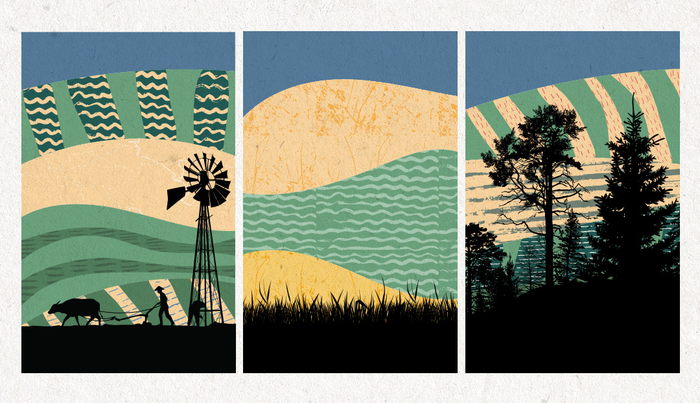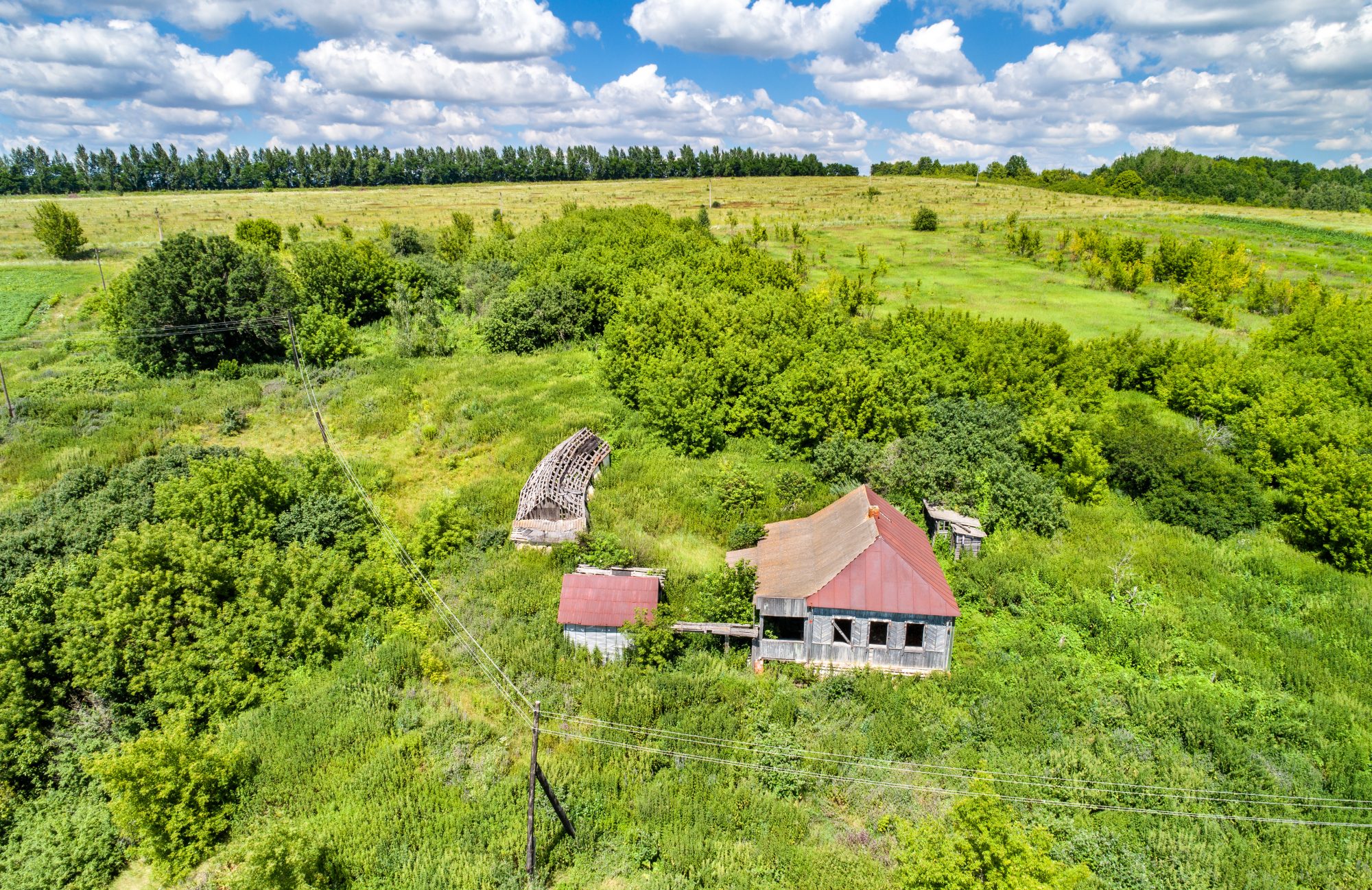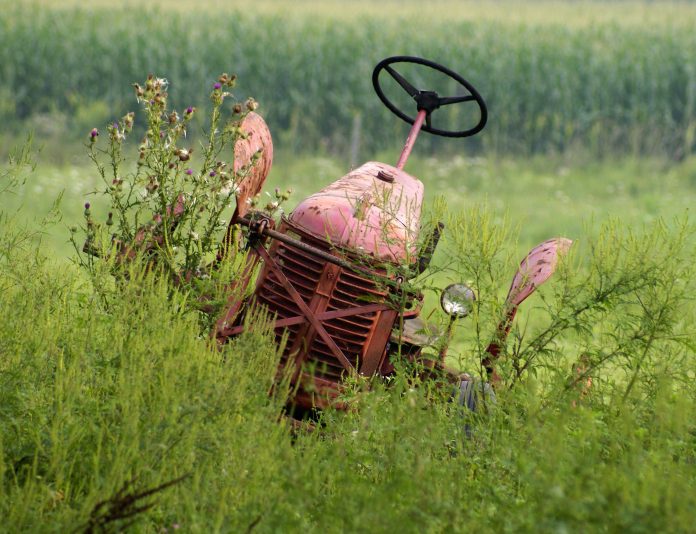With millions of people leaving behind rural areas, land restoration of abandoned farms could help to reverse climate change
All around the world people are abandoning millions of acres of land and leaving for urban centres. This is known as “rural outmigration” and the factors behind this migration are complex. Some individuals leave in search of a more stable economic situation, others are forced out due to conflict or the effects of climate change.
It is no surprise that rural outmigration, in combination with globalisation and mechanisation, is impacting the farmlands left behind. As the population shifts, so does the economics of farming in these areas, meaning that less productive lands become abandoned altogether.
Policy intervention needed to regenerate abandoned farmlands
Some of these croplands regenerate into natural habitats, enhancing local biodiversity and helping to absorb atmospheric carbon.
However, according to a study in Science Advances, this restoration is unlikely without policy interventions. Instead, many farms are recultivated, preventing the land from reaching optimum restoration.
“As people move from rural areas into cities, there is a chance for wildlife and the climate to gain ground — literally — as abandoned farms and pastures revert back to forests and grasslands,” said study co-author David Wilcove, professor of ecology and evolutionary biology and public affairs and the High Meadows Environmental Institute (HMEI).
“Our work shows that this is not happening because the ‘abandoned’ lands are being rapidly recultivated.”
Lead author Christopher Crawford, a Ph.D. candidate at Princeton University, said: “Unless countries and policymakers develop better regulations and incentives to allow these lands to recover, this chance to restore ecosystems will not be fully realised. It will remain a missed opportunity to fight climate change and biodiversity loss.”
Both Crawford and Wilcove are affiliated with the Center for Policy Research on Energy and the Environment, based at the Princeton School of Public and International Affairs. The study “Rural Land Abandonment Is Too Ephemeral to Provide Major Benefits for Biodiversity and Climate,” is published in Science Advances.

How was the research on land restoration carried out?
Using cutting edge land-cover maps developed from satellite imagery covering 1987 to 2017, the researchers could see where land restoration was occurring and how long this process lasted. By tracking individual land areas over time, they could estimate abandonment and recultivation. Images from 11 sites across four continents, including locations in:
- United States
- Brazil
- Bosnia
- Herzegovina
- China
- Iraq
- Kazakhstan
- Belarus
- Russia
It was determined that cropland was abandoned for a variety of reasons, including war and conflict and socioeconomic and environmental factors.
Some of the sites in the former Soviet Union were abandoned following the geopolitical upheaval of the union’s collapse. In China, active reforestation programmes has led to land restoration on marginal agricultural land. Like other countries in the study, China is also experiencing increasing amounts of rural emigration.

Abandoned cropland needs to be left for 50 years to reach optimum land restoration
Essentially, the environmental benefit of abandoned farmland depends on how long land has been left empty, and how long it stays like that.
It was unfortunate that the researchers discovered that a large proportion of land surveyed was eventually recultivated before it could be fully restored.
Generally speaking, land in the former Soviet Union experienced the highest levels of recultivation whereas in China’s Shaanxi and Shanxi provinces, land was left abandoned for longer. It is thought that China’s more relaxed approach to recultivation is owing to the central government’s “Grain for Green Program” which provides financial incentives to reforest cropland.
The study concluded that 14 years is the average time that cropland was left abandoned. This time period is not long enough for the farmland to offset substantial amounts of carbon or for it to become a high-quality habitat for wildlife.
The models predict that within 30 years, 50% of the abandoned croplands will be recultivated, meaning that environmental benefits will be lost. By ploughing and recultivating this this land, these sites resulted in more than 30% less area abandoned and 35% less carbon sequestered by 2017.
Crawford said: “Without incentives for restoration, cropland abandonment rarely lasts long enough to yield benefits for biodiversity or carbon sequestration. For abandoned croplands to reach levels of carbon stocks and biodiversity comparable to more intact natural ecosystems, they typically need at least 50 years of regeneration.”
The good news is that the findings from the Shaanxi and Shanxi provinces provide evidence that land restoration incentive programmes can succeed. It was also proposed that abandoned fields, especially on cropland not necessary for food production, should become protected areas.
These ecosystem service programmes could financially reward farmers who abandon their croplands. Alternatively, they could support sustainable long-term cultivation of farms to avoid excessive turnover of fields.












I have been running and climate change group based on the Drawdown project and subsequent book. We have been following the science and I note with reference to your above article that I can find no reference to feeding the land to restore microbial life.
I am aware that nitrogen fertilizers feed the plants but that not taken up sinks through the water courses and into the sea causing serious problems there. I note that excellent fertilizer can be produced from human sewage using an anaerobic digester to heat it to 90c to kill that pathogens. There is no shortage of supply.
I am aware that the in the near future land mass will diminish significantly and huge populations will be dispossessed on the move looking for somewhere else. There are other severe problems too. Thank you for your enterprise. 50 years for land to recover is much too long